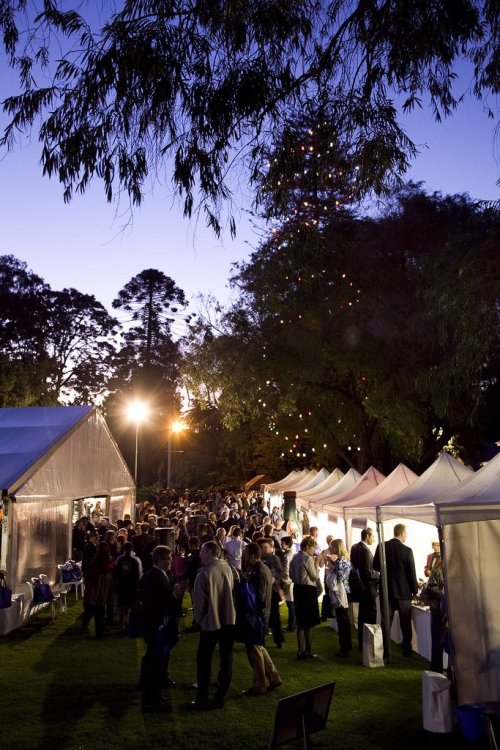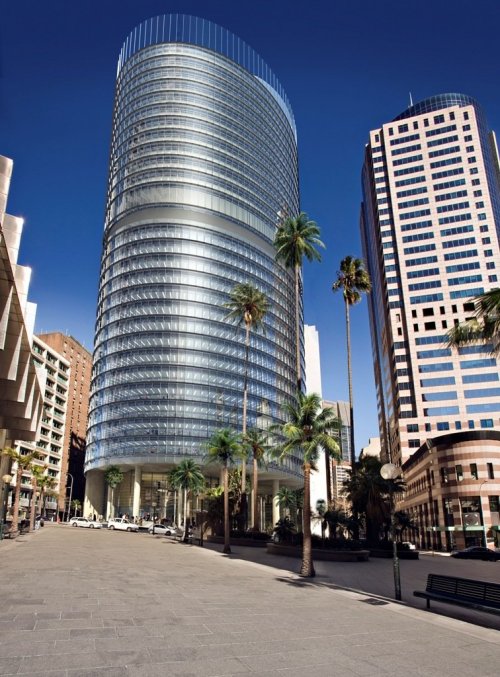How green building is changing the world
Monday, 24 October, 2011
On the outskirts of Cape Town in South Africa, in a poverty-stricken township known as Cape Flats, sits an environmental centre that is a standard stop on tour itineraries for designers, architects and students of international culture.
International visitors don’t come to the Tsoga Environmental Centre to see its green building features - although they may be interested to see the biogas digester, wind turbines, grey- and black-water on-site treatment facility and clever use of recycled and local materials.
What people come for, and what makes this project special, is the way the Tsoga Environmental Centre addresses socio-economic sustainability alongside environmental sustainability - by creating employment, offering training and empowering the local community.
The project team responsible for the centre ensured the community was deeply engaged throughout the design and construction process, and all construction workers received both specific skills training and general problem-solving skills that they could transfer to other projects. Components of the building were designed so that they could be supplied by local small enterprises: brick recycling, door and window manufacture, reed ceilings and landscaping solutions were outsourced to local enterprises.
Material suppliers were assessed for compliance with fair labour practice and support for ‘historically disadvantaged’ individuals - in other words, people who experienced discrimination under the apartheid regime.
And labour-intensive construction methods were deliberately used, which enabled 80% of the building budget to be committed to employment, as opposed to the conventional 30-50%.
The Tsoga Environmental Centre is a bricks-and-mortar example of a new phenomenon: social sustainability. But while it may be a new term, it’s an old concept. The phrase ‘social sustainability’ reminds us that people should always be front-and-centre of any new building, development or community. Buildings - whether schools, hospitals, offices or homes, and whether at design stage, construction or operations - should be based around the people within them; their purpose, their objectives and their health.
The concept also reminds us that sustainability is about more than preserving our natural environment - and that green building practices can simultaneously address climate change while also delivering affordable housing, creating new jobs and supporting local economies.
While employment creation, skills training and other socio-economic concerns are not addressed by the conventional notion of green building, nor are they explicitly rewarded by green building rating schemes, they are becoming part of the broader idea of sustainability.
In Australia, favourable socio-economic outcomes can be achieved by considering transport options, improving indoor environment quality, boosting local employment opportunities and constructing buildings that people actually want to live and work in.
Some projects are also recognised for innovative approaches to social sustainability. At the 5 Star Green Star-rated Redfern Housing Redevelopment in Sydney, a minimum of 20 construction workers were required to be Indigenous. This was a ‘first’ for a public housing project in Australia, and Housing NSW was rewarded with a Green Star Innovation point (through the Inn-1 credit).
|
|
Empowering the local community was an integral part of the sustainable development, and Housing NSW provided employment opportunities to both Aboriginal and long-term unemployed people to enhance their business skills, increase their knowledge of ESD issues and improve the social and economic conditions for both the individuals and their community.
Building rating systems are one of the most powerful mechanisms for affecting positive change and market transformation, and the World Green Building Council is currently looking at developing a socio-economic category that can be integrated or overlaid into existing tools.
While the new socio-economic category is some time away, headway is already being made. Organisations are increasingly recognising that their work environments affect the health, morale and productivity of their staff. The public ground floor plaza of the 6 Star Green Star-rated 1 Bligh Street in Sydney, for instance, acts as a meeting place for workers, with a living green wall and broad steps which double as informal seating. Such design elements enhance productivity and uplift the spirit. Principal architect on the project Christoph Ingenhoven has said that 1 Bligh Street will be an “enduring presence attuned to emerging cultural, social and environmental concerns.”
|
|
Similarly, the property and construction industry is considering how new precinct developments can affect employment opportunities, economic prosperity and general liveability. As part of its Green Star - Communities project, the GBCA has developed five principles for sustainable communities - liveability, economic prosperity, environmental responsibility, design excellence and governance.
Building and community rating tools will enable us to broaden our measurement of sustainability beyond the current environmental metrics and help us to measure some less tangible, but equally important, questions: how do we build resilient, prosperous and adaptable communities? And how do we sustain the unique environmental and social ecologies of our cities? Green buildings and communities may provide the answers to these questions.
* By Tony Arnel, Chairman, Green Building Council of Australia
By Tony Arnel, Chairman, Green Building Council of Australia
2024 Thought Leaders: Cuong Vo
Bürkert Australia's General Manager expects growing demand for customised automation...
How to navigate Australia’s new climate regulations
Australia’s new mandatory climate reporting regulations are set to take effect next year,...
A concrete use for carpet fibres
Australian engineers have come up with an unexpected use for discarded carpets: as a means to...










